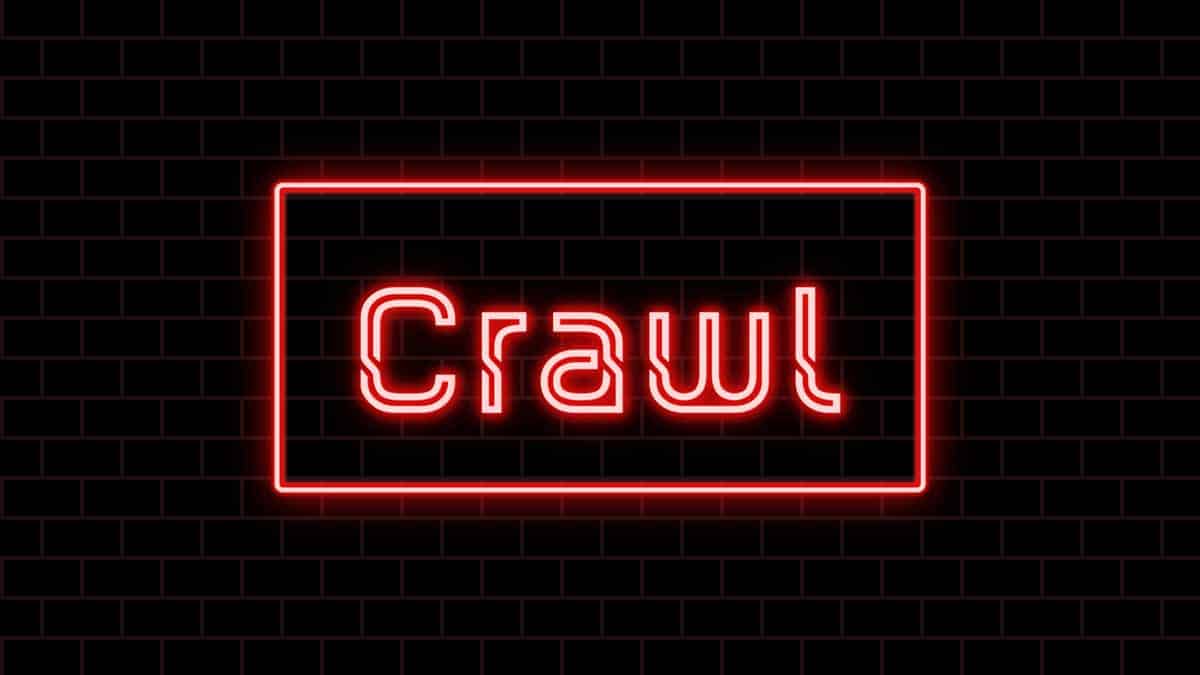
Jump to a section:
When was the last time you searched for your website on Google and couldn’t find the page you were looking for—even though you knew it existed? That frustrating experience highlights the importance of crawlability and indexability in search engine optimization (SEO). Simply put, crawlability refers to how easily search engine bots (often called “spiders”) can navigate the pages of your website. Indexability, on the other hand, is about whether those crawled pages are eligible to appear in search engine results.
Imagine you have a wonderfully designed website brimming with valuable content, but if Googlebot can’t crawl your pages effectively, or worse, can’t include them in their index, all that work goes to waste. Studies show that over 90% of pages on the internet receive no organic traffic from Google, often because those pages are invisible to search engines due to crawl and index issues.
Improving crawlability and indexability is a critical step in any SEO strategy. Without it, your on-page optimizations, keyword research, or even top-notch content might never see the light of day (or Google’s SERP). But like many facets of SEO, there are common pitfalls and challenges that stand between you and a fully optimized, easily discoverable website.
The Challenges of Improving Crawlability and Indexability
1. Complex or Disorganized Site Architecture
One of the biggest roadblocks for search engine bots is a poorly structured website. If your website has a tangled navigation system, hidden subpages, or random linking, bots may struggle to move logically from one section to another.
- Multiple Subfolders: Going several layers deep (e.g.,
www.example.com/category/subcategory/subsubcategory/page.html) may confuse both users and crawl bots. - Random or Broken Internal Links: Conflicting or outdated navigation elements can create dead ends or loops, stalling the crawl process.
- Redundant Categories: Similar or duplicate category pages might cause confusion about which page to prioritize or index.
Why It’s Tough:
- Reorganizing a complex site structure can be time-consuming and often requires buy-in from multiple stakeholders (developers, content creators, marketing teams).
- A site with hundreds or thousands of pages amplifies the risk of orphan pages, thin content, or duplicate categories.
2. Improper Use of Robots.txt and Meta Robots Tags
The robots.txt file is your website’s way of telling bots which areas they can or cannot crawl. Meta robots tags at the page level serve a similar purpose, letting search engines know whether a specific page can be indexed or followed.
- Overly Restrictive Robots.txt: Blocking entire folders or file types can inadvertently prevent important pages from being crawled.
- Misuse of Noindex, Nofollow Tags: Adding these tags without proper understanding can remove valuable pages from search results.
- Poorly Formatted File: A single misplaced character in robots.txt could disallow an entire site or critical sections.
Why It’s Tough:
- Knowing which pages to keep out of the index (like internal admin pages) versus which pages to allow can be confusing, especially if multiple teams edit robots.txt or meta tags.
- Mistakes often go unnoticed until you realize key pages have vanished from Google’s index—or never appeared at all.
3. Large Amounts of Duplicate or Thin Content
Search engines strive to deliver the best, most relevant content to users. Pages with nearly identical text or shallow content risk being ignored—or worse, they can deplete your crawl budget, diverting the bot’s attention away from your best pages.
- E-commerce Product Variations: A single item in multiple colors or sizes can spawn dozens of near-duplicate pages.
- Printer-Friendly or AMP Versions: If not handled correctly, alternative page formats might be indexed as duplicates.
- Scraped or Syndicated Content: Republishing the same content on multiple URLs can confuse search engines about which version is canonical.
Why It’s Tough:
- Removing duplicate pages can entail rethinking your URL structure and implementing consistent canonical tags—technical tasks that can be cumbersome to manage for large sites.
- In many cases, marketing or product teams prefer to keep these variations for user convenience, creating tension between user experience and SEO best practices.
4. Slow Page Speed and Server Issues
Even if your pages are well-structured and free of duplicates, a sluggish server or poor page speed can reduce the number of pages a crawler can visit within its allocated time (often referred to as your “crawl budget”).
- High Hosting Latency: Overloaded or underperforming servers lead to long response times and potential timeouts.
- Large Media Files: Unoptimized images, videos, or scripts can significantly slow page load times.
- Frequent Server Errors (5xx): Persistent errors can discourage bots from returning quickly, harming your site’s crawl frequency.
Why It’s Tough:
- Speed optimization usually involves a mix of server upgrades, code refactoring, and content optimization—tasks that can be costly and require specialized knowledge.
- Quick fixes like image compression may only treat the symptoms; deeper structural changes might be required for a lasting improvement.
5. Lack of XML Sitemaps or Poorly Formatted Ones
XML sitemaps act as a roadmap to your website’s content, helping search engines discover your most important pages. Without a clear sitemap—or with one that’s riddled with errors—search engines may overlook entire sections of your site.
- Missing or Incomplete Sitemaps: Pages buried deep within the site or newly created may not get indexed promptly.
- Incorrect Priority and Frequency: Misleading tags in the sitemap (like saying you update daily when it’s really monthly) can confuse bots.
- Multiple Sitemaps with Overlap: Having multiple sitemaps can create conflicts or duplications if they’re not managed properly.
Why It’s Tough:
- Generating dynamic sitemaps for large sites requires ongoing updates to ensure new or updated content is always included.
- Even small syntax errors in XML files can cause parsing failures that prevent search engines from reading your sitemap altogether.
6. Orphan Pages and Poor Internal Linking
An orphan page is a page on your site that isn’t linked from any other page, making it nearly impossible for crawlers to find unless it’s listed in the sitemap or discovered via external backlinks.
- Broken Link Hierarchy: Content might live in a location that doesn’t match your site’s primary navigation, leaving it hidden.
- Frequent Content Updates: Pages get published, then forgotten or never linked in main category or archive sections.
- Dynamic URL Generation: E-commerce or forums generate URLs on the fly, which can create hidden corners within your site.
Why It’s Tough:
- Manually scanning for orphan pages can be labor-intensive, especially if you have a large or complex site.
- Even with a robust linking strategy, frequent site updates risk creating new orphan pages if you don’t consistently monitor the situation.
7. Not Keeping Pace With Algorithm Updates
Search engines update their algorithms regularly, and sometimes, changes focus heavily on how they crawl and prioritize content. Failing to stay updated can lead to outdated site structures or missed opportunities.
- Core Web Vitals: Google’s emphasis on site performance metrics can directly affect crawling efficiency.
- Mobile-First Indexing: If your mobile site is subpar, search engines might prioritize your pages lower in the index.
- New Markup or Protocols: Innovations like schema markup can help search engines more easily parse your content—but only if you implement them correctly.
Why It’s Tough:
- Algorithm shifts aren’t always transparent, making it difficult to pivot your SEO strategy effectively.
- Focusing on day-to-day tasks can push monitoring for updates to the back burner, causing you to miss critical adjustments.
Strategies to Improve Crawlability and Indexability
Now that we’ve outlined the common challenges, it’s time to dive into practical, step-by-step solutions. Implementing these strategies can help search engine bots crawl your site more thoroughly and efficiently—leading to better indexation and, ultimately, higher visibility in the SERPs.
1. Build a Logical, Streamlined Site Structure
Why This Matters
A well-organized structure is the foundation of crawlability. Bots crawl from one link to another; if the path is logical and minimal in depth, they’re more likely to discover all your important pages.
How to Do It
- Create a Clear Hierarchy: Think of your site as a pyramid: the homepage at the top, categories in the middle, and individual pages at the bottom.
- Use Descriptive URLs: Include keywords or descriptive text in URLs rather than generic IDs (e.g.,
yoursite.com/blog/crawlability-tipsvs.yoursite.com/blog?id=123). - Limit Deep Nesting: Aim for a maximum of three to four clicks to get from the homepage to any given page.
- Implement Breadcrumb Navigation: This helps both users and crawlers understand the page’s location within the site hierarchy.
- Perform Regular Site Audits: Tools like Screaming Frog, Sitebulb, or Ahrefs Site Audit can pinpoint structural issues and highlight overly deep pages.
Pro Tip: Try mind-mapping your site’s categories and subcategories to visualize connections. If certain areas appear overly complex, restructure them.
2. Optimize Robots.txt and Meta Robots Tags
Why This Matters
Robots.txt and meta robots tags are direct signals to search engines about what they can or cannot crawl. Optimizing these effectively can keep bots focused on your important pages.
How to Do It
- Strategically Allow/Disallow: Only disallow pages that should remain private or are irrelevant—like admin panels, cart pages, or staging environments.
- Use the Right Syntax: For example:
- Place the File in the Right Location: Robots.txt must be in the root directory (e.g.,
example.com/robots.txt). - Leverage Meta Robots: Use
noindex, followfor pages you don’t want indexed but do want link equity to pass through. - Regularly Test: Use Google Search Console’s Robots.txt Tester to ensure your directives are valid.
Pro Tip: Avoid blocking CSS and JS files that are essential for rendering. Blocking them might prevent Google from understanding your page layout, hurting your mobile-friendliness and overall ranking potential.
3. Address Duplicate and Thin Content
Why This Matters
Duplicate pages can confuse search engines about which version to index. Thin content doesn’t provide value, making it less likely to be indexed. Cleaning up these issues frees your crawl budget for the pages that matter most.
How to Do It
- Implement Canonical Tags: For product variations or similar pages, add
rel="canonical"to point to the primary version. - Consolidate or Remove Redundant Pages: Merge near-duplicate content into a single, more comprehensive page.
- Utilize 301 Redirects: If a page is truly unnecessary, redirect it to the most relevant, existing page.
- Add Depth to Thin Content: Turn a 200-word blog post into a 1,000-word guide if it’s worthwhile. If it’s not, consider removing it.
- Check for Query String Duplication: E-commerce or tracking parameters can create multiple URLs for the same content (e.g.,
?ref=twitteror?color=blue). Use canonical tags or URL rewriting to unify them.
Pro Tip: Use Google Search Console’s Index Coverage and URL Inspection tools to spot pages with low content, coverage warnings, or duplication issues.
4. Speed Up Your Site and Enhance Server Performance
Why This Matters
Crawl bots operate within certain time budgets. Faster load times let them crawl more pages during each visit, improving overall index coverage.
How to Do It
- Optimize Images and Media: Compress images using tools like TinyPNG, serve scaled images for different devices, and defer heavy scripts when possible.
- Leverage Browser Caching: Enable caching headers so repeat visitors (and bots) don’t have to redownload the same files each time.
- Minimize Render-Blocking Resources: Place scripts at the bottom of the page or load them asynchronously to avoid blocking the initial render.
- Upgrade Hosting: If you’re seeing constant server overload, consider moving to a more robust plan or a dedicated/virtual private server (VPS).
- Use a CDN: A content delivery network can reduce latency by serving your files from geographically distributed servers.
Pro Tip: Monitor your site’s Core Web Vitals (LCP, FID, CLS) regularly. While primarily user-focused metrics, a better user experience often correlates with improved crawl efficiency.
5. Create and Maintain XML Sitemaps
Why This Matters
A properly formatted and regularly updated XML sitemap gives search engines a direct route to your most important pages, helping them discover new or updated content faster.
How to Do It
- Generate an Up-to-Date Sitemap: Use SEO plugins (for CMS platforms like WordPress) or third-party tools to generate your sitemap automatically.
- Include Only Canonical Versions: Avoid listing pages that are duplicates or tagged with
noindex. - Set Priority and Frequency Wisely: Don’t overinflate the importance of every page; highlight truly essential pages.
- Submit to Search Engines: In Google Search Console and Bing Webmaster Tools, submit your sitemap URL (e.g.,
example.com/sitemap.xml). - Break Large Sitemaps: If you have more than 50,000 URLs, split your sitemap into multiple files to avoid parsing issues.
Pro Tip: Create a separate sitemap for images or videos if they’re critical to your site, especially if you run a large media library or content platform.
6. Fix Orphan Pages and Strengthen Internal Linking
Why This Matters
Strong internal linking ensures that every significant page is discoverable by both users and bots. Orphan pages may remain invisible, leaving valuable content out of the index.
How to Do It
- Conduct a Crawl Report: Tools like Screaming Frog can identify which pages aren’t linked internally.
- Add Relevant Internal Links: Link from high-authority or contextually related pages to your orphan pages.
- Use Navigation and Footers Wisely: Place links to your most crucial sections in your main navigation or footer to ensure they’re always accessible.
- Incorporate Related Posts/Products: At the bottom of articles or product pages, add a “You May Also Like” or “Related Articles” section.
- Ensure Proper Anchor Text: Use descriptive text for links (e.g., “SEO crawlability tips” rather than “click here”).
Pro Tip: Once you fix orphan pages, re-run a crawl report to confirm that all previously orphaned URLs are now being linked effectively—and that you haven’t introduced new ones.
7. Keep an Eye on Algorithm Updates and Best Practices
Why This Matters
Search engine algorithms evolve, and staying current helps you anticipate or react to changes that might affect how bots crawl and index your site.
How to Do It
- Subscribe to Official Channels: Follow Google Search Central Blog, Bing Webmaster Tools announcements, and major SEO news sites.
- Monitor Algorithm Changes: Watch for known updates (e.g., Google core updates) and analyze any drops or gains in your index coverage.
- Adapt Fast: If mobile-first indexing is rolled out, ensure your mobile site is fully optimized. If speed becomes a more critical factor, double down on performance improvements.
- Use Structured Data Markup: Implement schema or other structured data to help search engines interpret your content.
- Continuously Refine: SEO is never one-and-done. Adjust your crawling and indexing strategies as you learn more from data and new guidelines.
Pro Tip: Join reputable SEO forums or communities. Often, the first hints of an algorithm shake-up appear in SEO groups where users notice unusual ranking volatility or crawl anomalies.
8. Leverage Webmaster Tools and Log File Analysis
Why This Matters
Webmaster tools (like Google Search Console) and server log file analysis give you invaluable insights into how search engine bots interact with your site—where they spend time, which pages they frequently crawl, and where they encounter errors.
How to Do It
- Set Up Search Console and Bing Webmaster Tools: Regularly check their “Coverage” or “Index” reports for crawl errors.
- Analyze Server Logs: Check for repeated error codes (4xx or 5xx) to pinpoint problematic URLs or server instability.
- Monitor Crawl Rates: See how often bots visit your site and whether they’re crawling the pages you consider most important.
- Fix Reported Issues Promptly: If Search Console flags errors (like “Submitted URL has crawl issue”), investigate and resolve them ASAP.
- Look for Patterns: If certain directories or subdomains show fewer crawls, find out why. Perhaps they’re blocked by robots.txt or overshadowed by other sections.
Pro Tip: Log file analysis might require specialized tools or knowledge of code syntax. If this feels daunting, consider hiring a developer or an SEO technical expert to assist you.
9. Maintain a Crawl-First Mentality
Why This Matters
Crawlability and indexability shouldn’t be an afterthought. Every time you add new pages, make significant design changes, or alter your content strategy, consider how these updates might affect search engine bots.
How to Do It
- Collaborate with Developers Early: When planning a site revamp, ensure your developers understand SEO fundamentals.
- Create an Ongoing Checklist: Before any page or section goes live, confirm it has the right tags, is included in the sitemap, and isn’t blocked by robots.txt.
- Schedule Routine Site Audits: Put a system in place—weekly, monthly, or quarterly depending on site size—to catch new issues.
- Train Content Teams: Ensure that editorial staff knows how to properly link internally, manage categories, and avoid creating duplicate content inadvertently.
- Monitor Index Coverage: Use Google Search Console’s “Pages” or “Index Coverage” report to keep tabs on how many of your pages are actually being indexed.
Pro Tip: Culture is key. Make crawlability part of your organization’s DNA so that each department—from product managers to copywriters—knows the basics of how search engines discover content.
Cheat Sheet
| Strategy | Top 5 Tactics |
|---|---|
| Build a Logical Site Structure | 1. Use a pyramid-like hierarchy 2. Keep URL slugs descriptive 3. Limit deep nesting 4. Add breadcrumb navigation 5. Conduct regular site audits |
| Optimize Robots.txt & Meta Robots Tags | 1. Allow/disallow strategically 2. Double-check syntax 3. Put robots.txt in root 4. Use noindex, follow if needed5. Test regularly with Google tools |
| Address Duplicate & Thin Content | 1. Use canonical tags 2. Merge or remove redundant pages 3. 301 redirect truly unnecessary pages 4. Expand shallow content 5. Check for parameter duplicates |
| Speed Up Site & Improve Server Performance | 1. Compress images & files 2. Leverage browser caching 3. Load scripts asynchronously 4. Upgrade hosting if needed 5. Use a CDN for global coverage |
| Create & Maintain XML Sitemaps | 1. Use SEO plugins/tools for generation 2. Include canonical URLs only 3. Correctly set priority & frequency 4. Submit to Google & Bing 5. Split large sitemaps |
| Fix Orphan Pages & Strengthen Internal Links | 1. Scan for orphan pages with crawler 2. Add internal links from relevant high-traffic pages 3. Use descriptive anchor text 4. Check nav & footer links 5. Use “related posts” widgets |
| Stay Current With Algorithm Updates | 1. Follow official Google & Bing blogs 2. Monitor SEO forums 3. Implement schema/markup changes quickly 4. Prioritize mobile-first 5. Adapt to new user experience signals |
| Use Webmaster Tools & Log Analysis | 1. Check GSC for errors 2. Analyze server logs 3. Monitor crawl rates 4. Resolve crawl issues ASAP 5. Track patterns in error codes |
| Maintain a Crawl-First Mentality | 1. Involve SEO in dev discussions early 2. Build a pre-launch checklist 3. Do frequent site audits 4. Train content teams 5. Track index coverage |
Conclusion
Crawlability and indexability form the bedrock of any successful SEO strategy. You could be publishing world-class content, but if search engine bots can’t effectively reach or index those pages, your brilliance remains hidden in the depths of the internet. By systematically addressing challenges like complex site structures, improper robots.txt usage, duplicate content, server speed issues, and orphan pages, you’ll pave a clear path for bots to explore and rank your content.


